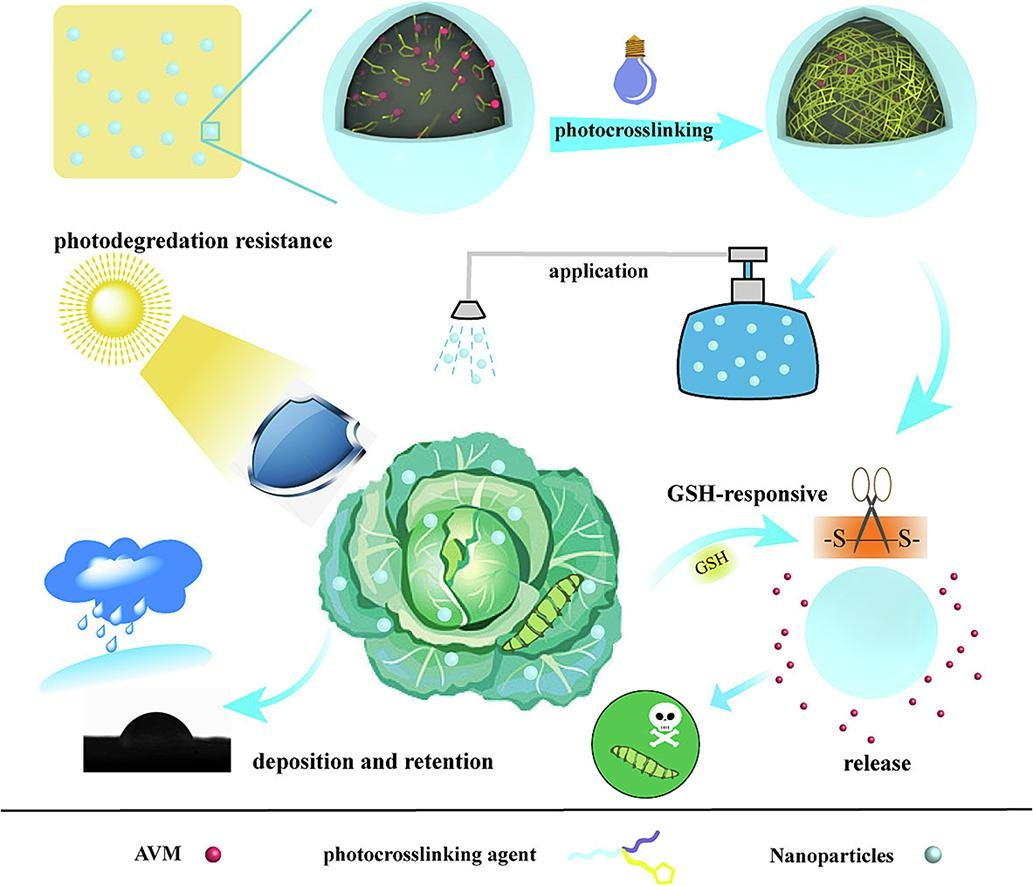
Pesticides are crucial for maintaining high crop yields and sufficient food supplies. However, typically only about 0.1 % of the applied amount of a pesticide indeed affects the target harmful organism because of losses due to degradation, evaporation, leaching, and runoff. This low utilization efficiency represents an enormous waste of resources and can cause great harm to human health and the natural environment, for example, affecting nontarget organisms (leading to a loss of biodiversity), polluting water bodies, etc. Therefore, methods for improving pesticide utilization efficiency, and thereby reducing negative impact on the ecological environment, are urgently needed. Nanotechnology is a novel means of developing pesticide formulations with high activity and low environmental risk and has provided a new platform for green agricultural methods. To achieve targeted, controlled release of active ingredients, nanotechnology has been combined with smart carrier materials that respond to environmental stimuli such as changes in pH, temperature, enzyme, redox conditions, and light.
Recently, Qingmin Wang’s group have synthesized PFTA, a dual-purpose emulsifying–cross-linking agent, by means of a one-step esterification reaction between a nonionic fluorinated surfactant and TA, which contains a disulfide bond. Then we prepared an AVM@PFTA nanogel (237.7 ± 4.6 nm) by means of a simple, green process involving photoinduced cross-linking of PFTA in an AVM NE nanoemulsion. The nanogel showed excellent spreadability and adhesiveness because of the good surface activity of PFTA and the nanogel particle size. Encapsulation of AVM in the three-dimensional cross-linked network structure of the nanogel enhanced AVM’s resistance to photodegradation (retention 82.4 % by 28 h) and facilitated its sustained release. Moreover, AVM was rapidly released in response to the presence of GSH because of the disulfide bonds in the nanogel. Evaluation of the insecticidal activity of the nanogel (LC50 = 4.6987 mg/L) showed that it performed markedly better than technical AVM (LC50 = 9.5399 mg/L) and two commercial AVM formulations (LC50 = 12.8427 mg/L for EW, LC50 = 14.5464 mg/L for EC). Therefore, this study presented a novel and performed-well nanogel construction approach, a facile, green, photo-crossing-linking way, which provided new insight and directions for the study of pesticide-delivery system. Relevant achievements were published in Chem. Eng. J., 2024, DOI: 10.1016/j.cej.2024.150061.